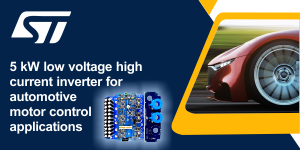Acoustic tester CARoLINE offers eight-channel synchronous sound measurement and analysis for quality assurance in automotive applications
During the manufacture of different vehicle components, assembly errors or the use of faulty components can occur. When these components are subsequently used, this can result in unwanted noise or vibrations, which are not only perceived as annoying but can also lead to increased wear. Both are unacceptable. If such a component is delivered unnoticed, costly dismantling and warranty measures for the mechatronic electric motor vehicle components are likely. The resulting damage to the company’s image cannot be ignored either. All automotive manufacturers therefore attach great importance to components that are as low in noise and vibration as possible. GÖPEL electronic has developed the innovative acoustic testers of the CARoLINE series for testing and analyzing production quality.
CARoLINE records noise data from a wide variety of sensors that measure vibrations or airborne sound. This data is evaluated in the associated software using a wide range of analysis options. The CARoLINE advanced model is supplied as a plug-in module for 19-inch racks or as a stand-alone device and can record signals from up to eight sensors simultaneously. In addition, analog displacement/rotation angle and digital trigger signals can be recorded. Furthermore, the ripple current evaluation of the test object enables the use of speed-dependent analyses. For lower testing costs, the CARoLINE smart model is available, which only includes four sensor channels. With both system variants, evaluation and analysis are equally possible, depending on the possible input signals.
In practical applications, individual sensors are selected for each specific case and then mounted at a suitable distance from the mechatronic electric motor noise source of the test object. For example, the structure-borne noise of a seat frame is measured at its skids. The sensors are connected to the CARoLINE system, which, after triggering the test sequence, synchronously records and evaluates the noise levels during operation and immediately compares them with parameters and limit values stored in the system. Deviations in production quality are thus detected immediately and can be corrected if necessary.
For a realistic assessment of noise influences on subsequent driving pleasure in the car, the CARoLINE system has various acoustic analysis methods, such as modulation analysis. This function can be used to calculate how strongly a certain frequency fluctuates during a selected movement – for example, when the exterior mirror is folded out. If, in this specific case, the fluctuation around a determined center frequency is too strong, this is quickly perceived as an unpleasant “whining” sound. A third-octave analysis of airborne sound signals enables psychoacoustic evaluations, such as tonality. By evaluating individual frequency ranges of the vibration or airborne sound data, disturbing noises such as “whistling,” “squeaking,” and “beeping” can be identified. Such and similar disturbing noises are unacceptable and can be detected and avoided at an early stage through the consistent use of acoustic testers in production.








